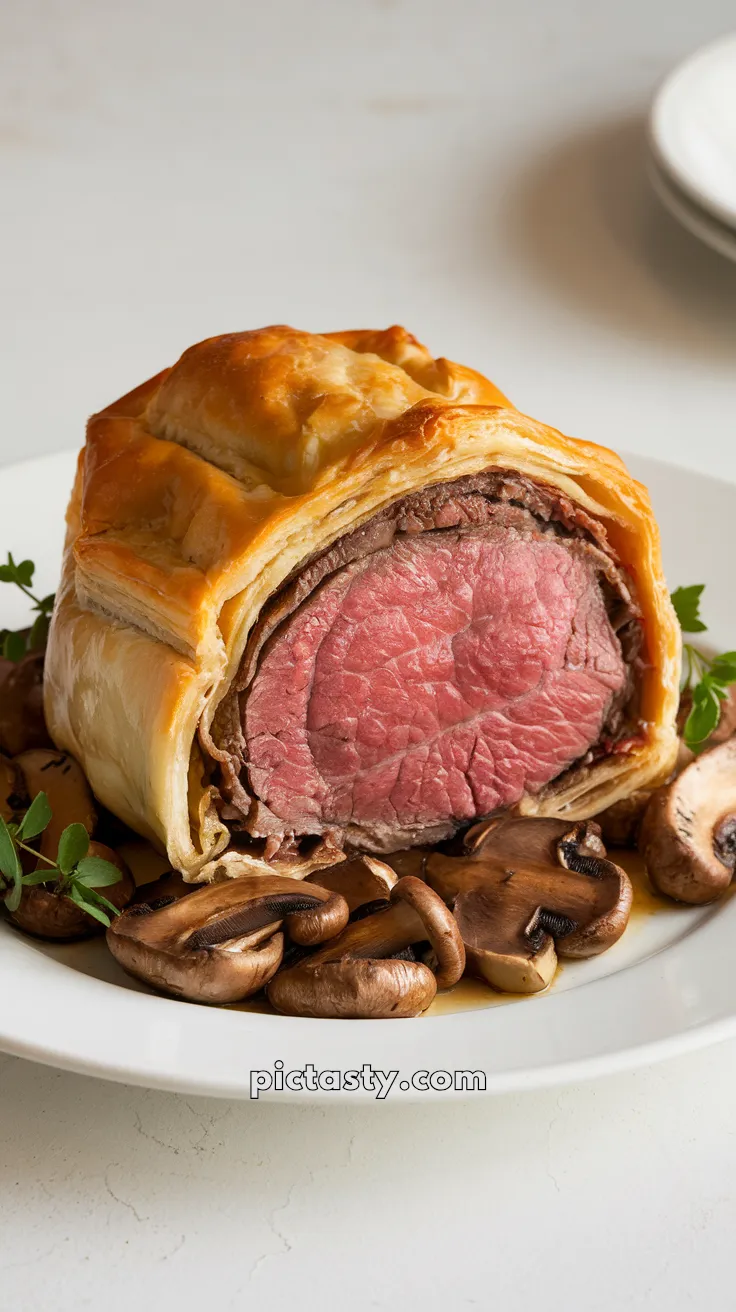Ever wondered how a dish could embody elegance? Beef Wellington, with its beautifully layered textures and refined flavors, is a culinary masterpiece that does just that. It’s like an exquisite painting – the rich, tender beef as the central figure, the duxelles and prosciutto forming the intricate background, all enclosed within a golden, flaky puff pastry frame. Doesn’t that make your mouth water?
And yet, isn’t it often the case that we shy away from such complex dishes, fearing they might be too challenging to recreate in our kitchens? But, what if I told you that making Beef Wellington is not as intimidating as it seems? With a few simple tips and step-by-step instructions, anybody can add this showstopper to their repertoire. Ready to take on the challenge?
The History of Beef Wellington
It’s always fascinating to delve into the history of a dish as iconic as Beef Wellington. While its exact origins are shrouded in mystery, it is believed to be named after Arthur Wellesley, the 1st Duke of Wellington. Known for his victory in the Battle of Waterloo, he was said to be quite fond of a dish of beef, mushrooms, truffles, and pate cooked in pastry, very similar to the modern Beef Wellington.
Others argue that the dish is simply a more sophisticated version of a common technique, the en croute (in crust), used by many cultures throughout history. Regardless of its origins, one thing is certain – Beef Wellington, with its combination of flavors and presentation, has stood the test of time as a dish of elegance and refinement.
Choosing the Right Cut of Meat
At the heart of Beef Wellington is a beautifully seared cut of beef. Most recipes call for a center-cut piece of beef tenderloin, and for good reason. This cut is incredibly tender and lean, making it the perfect candidate for the slow, gentle cooking process that Beef Wellington requires.
It’s critical to start with high-quality meat. Look for a piece that is evenly shaped and has a good, clean color. This will ensure that it cooks evenly and presents well when sliced. Remember, with a dish as simple as this, the quality of your ingredients can make or break the final result.
Creating the Perfect Duxelles
The duxelles, a finely chopped mixture of mushrooms, shallots, and herbs, is one of the key elements of Beef Wellington. It adds an earthy depth of flavor that perfectly complements the richness of the beef. To create the perfect duxelles, it’s important to chop the ingredients as finely as possible and to cook them slowly, allowing the flavors to meld together.
Also, remember to drain any excess liquid before using the duxelles. You want to keep the puff pastry as crisp as possible, and too much moisture could make it soggy. The last thing you want is a soggy Beef Wellington!
Ingredients
- 800g of beef fillet
- 500g mixed wild mushrooms, cleaned
- 1 large sprig of fresh thyme
- 12 slices of prosciutto
- 500g puff pastry
- Flour, for dusting
- 2 egg yolks, beaten
- Sea salt and freshly ground black pepper
Instructions
- Preheat your oven to 200°C/400°F/gas 6. Season the beef with salt and pepper, then sear it in a hot pan with a little oil. Set aside.
- Chop the mushrooms and fry with a little oil and the thyme leaves until you have a softened mixture. Allow it to cool.
- Overlap two pieces of plastic wrap on a large chopping board. Lay the prosciutto on the wrap, slightly overlapping. Spread the mushroom mixture over the prosciutto, then place the seared beef on top. Roll it up tightly in the plastic wrap and chill for 15 minutes.
- Roll out the puff pastry on a floured surface. Unwrap the beef from the plastic wrap and place it in the center of the pastry. Fold the pastry over the beef and seal it with the beaten egg yolk. Chill for another 15 minutes.
- Brush the pastry with more egg yolk, then bake for 20-25 minutes for medium-rare. Allow the Beef Wellington to rest for 10 minutes before slicing and serving.
Cook and Prep Times
- Prep Time: 1 hr
- Cook Time: 25 min
Tips for Beef Wellington
Always rest your Beef Wellington before cutting into it. This allows the juices to redistribute, resulting in a moister cut. If you’re worried about the pastry getting soggy, try brushing the inside with egg white before adding the filling. This creates a seal that helps to keep the pastry crisp.
Why This Recipe is a Must-Try
This Beef Wellington recipe is a must-try because it allows home chefs to create a sophisticated, restaurant-quality dish in their own kitchen. It’s not just a meal, but a culinary journey that engages the senses. The contrasting textures of the crisp pastry, succulent beef, and earthy duxelles, paired with the visual appeal of the dish, make it an unforgettable dining experience.
Nutrition Information
- Calories: 675 kcal
- Protein: 42g
- Fat: 48g
- Carbohydrates: 20g

